George Washington Carver
From Wikipedia, the free encyclopedia
"George Carver" redirects here. For the English cricketer, see George Carver (cricketer).
| George Washington Carver | |
|---|---|

Photograph of George Washington Carver taken by Frances Benjamin Johnston in 1906.
| |
| Born | 5 January 1864[1] Diamond, Missouri, U.S. |
| Died | January 5, 1943 (aged 79) Tuskegee, Alabama, U.S. |
| Religion | Christianity[2] |
George Washington Carver (5 January 1864[1][3] – 5 January 1943), was an American botanist and inventor. The exact day and year of his birth are unknown; he was born into slavery in Missouri, either in 1861, or January 1864.[1]
Carver's reputation is based on his research into and promotion of alternative crops to cotton, such as peanuts, soybeans, and sweet potatoes, which also aided nutrition for farm families. He wanted poor farmers to grow alternative crops both as a source of their own food and as a source of other products to improve their quality of life. The most popular of his 44 practical bulletins for farmers contained 105 food recipes using peanuts.[4]He also developed and promoted about 100 products made from peanuts that were useful for the house and farm, including cosmetics, dyes, paints, plastics, gasoline, and nitroglycerin. He received numerous honors for his work, including the Spingarn Medal of the NAACP.
During the Reconstruction-era South, monoculture of cotton depleted the soil in many areas. In the early 20th century, the boll weevil destroyed much of the cotton crop, and planters and farm workers suffered. Carver's work on peanuts was intended to provide an alternative crop.
He was recognized for his many achievements and talents. In 1941, Time magazine dubbed Carver a "Black Leonardo".[5]
Contents
[hide]Early years
Carver was born into slavery in Diamond Grove, Newton County, near Crystal Place, now known as Diamond, Missouri, possibly in 1864 or 1865, though the exact date is not known.[6][7] His master, Moses Carver, was a German American immigrant who had purchased George's parents, Mary and Giles, from William P. McGinnis on October 9, 1855, for $700. Carver had 10 sisters and a brother, all of whom died prematurely.[citation needed]
When George was only a week old, he, a sister, and his mother were kidnapped by night raiders from Arkansas.[8] George's brother, James, was rushed to safety from the kidnappers.[8] The kidnappers sold the slaves in Kentucky. Moses Carver hired John Bentley to find them, but he located only the infant George. Moses negotiated with the raiders to gain the boy's return,[8] and rewarded Bentley.
After slavery was abolished, Moses Carver and his wife Susan raised George and his older brother James as their own children.[8] They encouraged George to continue his intellectual pursuits, and "Aunt Susan" taught him the basics of reading and writing.
Black people were not allowed at the public school in Diamond Grove. Learning there was a school for black children 10 miles (16 km) south in Neosho, George decided to go there. When he reached the town, he found the school closed for the night. He slept in a nearby barn. By his own account, the next morning he met a kind woman, Mariah Watkins, from whom he wished to rent a room. When he identified himself as "Carver's George," as he had done his whole life, she replied that from now on his name was "George Carver". George liked Mariah Watkins, and her words, "You must learn all you can, then go back out into the world and give your learning back to the people", made a great impression on him.[citation needed]
At the age of thirteen, due to his desire to attend the academy there, he relocated to the home of another foster family in Fort Scott, Kansas. After witnessing a black man killed by a group of whites, Carver left the city. He attended a series of schools before earning his diploma at Minneapolis High School in Minneapolis, Kansas.
College
Carver applied to several colleges before being accepted at Highland College in Highland, Kansas. When he arrived, however, they rejected him because of his race. In August 1886, Carver traveled by wagon with J. F. Beeler from Highland to Eden Township in Ness County, Kansas.[9] He homesteaded a claim[10] near Beeler, where he maintained a small conservatory of plants and flowers and a geological collection. He manually plowed 17 acres (69,000 m2) of the claim, planting rice, corn, Indian corn and garden produce, as well as various fruit trees, forest trees, and shrubbery. He also earned money by odd jobs in town and worked as a ranch hand.[9]
In early 1888, Carver obtained a $300 loan at the Bank of Ness City for education. By June he left the area.[9] In 1890, Carver started studying art and piano at Simpson College in Indianola, Iowa.[11] His art teacher, Etta Budd, recognized Carver's talent for painting flowers and plants; she encouraged him to study botany at Iowa State Agricultural College in Ames.[11] When he began in 1891, he was the first black student, and later taught as the first black faculty member.
When he completed his B.S., professors Joseph Budd and Louis Pammel convinced Carver to continue at Iowa State for his master's degree. Carver did research at the Iowa Experiment Station under Pammel during the next two years. His work at the experiment station in plant pathology and mycology first gained him national recognition and respect as a botanist.
At Tuskegee
In 1896, Booker T. Washington, the first principal and president of the Tuskegee Institute, invited Carver to head its Agriculture Department. Carver taught there for 47 years, developing the department into a strong research center and working with two additional college presidents during his tenure. He taught methods of crop rotation, introduced several alternative cash crops for farmers that would also improve the soil of areas heavily cultivated in cotton, initiated research into crop products (chemurgy), and taught generations of black students farming techniques for self-sufficiency.
Carver designed a mobile classroom to take education out to farmers. He called it a "Jesup wagon" after the New York financier and philanthropist Morris Ketchum Jesup, who provided funding to support the program.[12]
To recruit Carver to Tuskegee, Washington gave him an above average salary and two rooms for his personal use, both of which concessions were resented by some other faculty. Because he had earned a master's in a scientific field from a "white" institution, some faculty perceived him as arrogant when a young man.[13] Unmarried faculty members normally had to share rooms, with two to a room, in the spartan early days of the institute.
One of Carver's duties was to administer the Agricultural Experiment Station farms. He had to manage the production and sale of farm products to generate revenue for the Institute. He soon proved to be a poor administrator. In 1900, Carver complained that the physical work and the letter-writing required were too much.[14] In 1904, an Institute committee reported that Carver's reports on yields from the poultry yard were exaggerated, and Washington confronted Carver about the issue. Carver replied in writing, "Now to be branded as a liar and party to such hellish deception it is more than I can bear, and if your committee feel that I have willfully lied or [was] party to such lies as were told my resignation is at your disposal."[15] During Washington's last five years at Tuskegee, Carver submitted or threatened his resignation several times: when the administration reorganized the agriculture programs,[16] when he disliked a teaching assignment,[17] to manage an experiment station elsewhere,[18] and when he did not get summer teaching assignments in 1913-1914.[19][20] In each case, Washington smoothed things over.
Carver started his academic career as a researcher and teacher. In 1911, Washington wrote a letter to him complaining that Carver had not followed orders to plant particular crops at the experiment station. This revealed Washington's micro-management of Carver's department, which he had headed for more than 10 years by then. Washington at the same time refused Carver's requests for a new laboratory, research supplies for his exclusive use, and respite from teaching classes. Washington praised Carver's abilities in teaching and original research but said about his administrative skills:
In 1911, Carver complained that his laboratory had not received the equipment which Washington had promised 11 months before. He also complained about Institute committee meetings.[21] Washington praised Carver in his 1911 memoir, My Larger Education: Being Chapters from My Experience.[22] Washington called Carver "one of the most thoroughly scientific men of the Negro race with whom I am acquainted." [23] After Washington died in 1915, his successor made fewer demands on Carver for administrative tasks.
While a professor at Tuskegee, Carver joined the Gamma Sigma chapter of Phi Beta Sigma fraternity. He spoke at the 1930 Conclave that was held at Tuskegee, Alabama, in which he delivered a powerful and emotional speech to the men in attendance.[24]
From 1915 to 1923, Carver concentrated on researching and experimenting with new uses for peanuts, sweet potatoes, soybeans, pecans, and other crops, as well as having his assistants research and compile existing uses.[25] This work, and especially his speaking to a national conference of the Peanut Growers Association in 1920 and in testimony before Congress in 1921 to support passage of a tariff on imported peanuts, brought him wide publicity and increasing renown. In these years, he became one of the most well-known African Americans of his time.
Rise to fame
Carver developed techniques to improve soils depleted by repeated plantings of cotton. Together with other agricultural experts, he urged farmers to restore nitrogen to their soils by practicing systematic crop rotation: alternating cotton crops with plantings of sweet potatoes or legumes (such as peanuts, soybeans and cowpeas). These both restored nitrogen to the soil and the crops were good for human consumption. Following the crop rotation practice resulted in improved cotton yields and gave farmers alternative cash crops. To train farmers to successfully rotate and cultivate the new crops, Carver developed an agricultural extension program for Alabama that was similar to the one at Iowa State. To encourage better nutrition in the South, he widely distributed recipes using the alternative crops.
In addition, he founded an industrial research laboratory, where he and assistants worked to popularize the new crops by developing hundreds of applications for them. They did original research as well as promoting applications and recipes which they collected from others. Carver distributed his information as agricultural bulletins. (See Carver bulletins below.)
Carver's work was known by officials in the national capital before he became a public figure. President Theodore Roosevelt publicly admired his work. Former professors of Carver's from Iowa State University were appointed to positions as Secretary of Agriculture: James Wilson, a former dean and professor of Carver's, served from 1897 to 1913.Henry Cantwell Wallace served from 1921 to 1924. He knew Carver personally as his son Henry A. Wallace and the researcher were friends.[26] The younger Wallace served as U.S. Secretary of Agriculture from 1933 to 1940, and as Franklin Delano Roosevelt's vice president from 1941 to 1945.
The American industrialist, farmer, and inventor William Edenborn of Winn Parish, Louisiana, grew peanuts on his demonstration farm. He consulted with Carver[27]
In 1916 Carver was made a member of the Royal Society of Arts in England, one of only a handful of Americans at that time to receive this honor. Carver's promotion of peanuts gained him the most notability. In 1919, Carver wrote to a peanut company about the potential he saw for peanut milk. Both he and the peanut industry seemed unaware that in 1917 William Melhuish had secured patent #1,243,855 for a milk substitute made from peanuts and soybeans.
The United Peanut Associations of America invited Carver to speak at their 1920 convention. He discussed "The Possibilities of the Peanut" and exhibited 145 peanut products. By 1920, the U.S. peanut farmers were being undercut by low prices on imported peanuts from the Republic of China.
In 1921 peanut farmers and industry representatives planned to appear at Congressional hearings to ask for a tariff. Based on the quality of Carver's presentation at their convention, they asked the African-American professor to testify on the tariff issue before the Ways and Means Committee of the United States House of Representatives. Due to segregation, it was highly unusual for an African American to appear as an expert witness at Congress representing European-American industry and farmers. Southern congressmen, reportedly shocked at Carver's arriving to testify, were said to have mocked him.[citation needed] As he talked about the importance of the peanut and its uses for American agriculture, the committee members repeatedly extended the time for his testimony. The Fordney-McCumber Tariff of 1922 was passed including one on imported peanuts. Carver's testifying to Congress made him widely known as a public figure.
Life while famous
During the last two decades of his life, Carver seemed to enjoy his celebrity status. He was often to be found on the road promoting Tuskegee, peanuts, and racial harmony. Although he only published six agricultural bulletins after 1922, he published articles in peanut industry journals and wrote a syndicated newspaper column, "Professor Carver's Advice". Business leaders came to seek his help, and he often responded with free advice. Three American presidents—Theodore Roosevelt, Calvin Coolidge and Franklin Roosevelt—met with him, and the Crown Prince of Sweden studied with him for three weeks. From 1923 to 1933, Carver toured white Southern colleges for the Commission on Interracial Cooperation.[25]
With his increasing notability, Carver became the subject of biographies and articles. Raleigh H. Merritt contacted him for his biography published in 1929. Merritt wrote,
In 1932 the writer James Saxon Childers wrote that Carver and his peanut products were almost solely responsible for the rise in U.S. peanut production after the boll weevil devastated the American cotton crop beginning about 1892. His article, "A Boy Who Was Traded for a Horse" (1932), in The American Magazine, and its 1937 reprint in Reader's Digest, contributed to this myth about Carver's influence. Other popular media tended to exaggerate Carver's impact on the peanut industry.[29]
From 1933 to 1935, Carver worked to develop peanut oil massages to treat infantile paralysis (polio).[25] Ultimately researchers found that the massages, not the peanut oil, provided the benefits of maintaining some mobility to paralyzed limbs.
From 1935 to 1937, Carver participated in the USDA Disease Survey. Carver had specialized in plant diseases and mycology for his master's degree.
In 1937, Carver attended two chemurgy conferences, an emerging field in the 1930s, during the Great Depression and the Dust Bowl, concerned with developing new products from crops.[25] He was invited by Henry Ford to speak at the conference held in Dearborn, Michigan, and they developed a friendship. That year Carver's health declined, and Ford later installed an elevator at the Tuskegee dormitory where Carver lived, so that the elderly man would not have to climb stairs.[5][30]
Carver had been frugal in his life, and in his seventies established a legacy by creating a museum on his work and the George Washington Carver Foundation at Tuskegee in 1938 to continue agricultural research. He donated nearly $60,000 in his savings to create the foundation.[30]
Legacy and honors
- 1923, Spingarn Medal from the NAACP, awarded annually for outstanding achievement.[25]
- 1928, honorary doctorate from Simpson College
- 1939, the Roosevelt Medal for Outstanding Contribution to Southern Agriculture
- 1940, Carver established the George Washington Carver Foundation at the Tuskegee Institute. *1941, The George Washington Carver Museum was dedicated at the Tuskegee Institute.
- 1942, Ford built a replica of Carver's birth cabin at the Henry Ford Museum and Greenfield Village in Dearborn as a tribute.
- 1942, Ford dedicated a laboratory in Dearborn named after Carver.
- 1943, Liberty ship SS George Washington Carver launched.
- 1965, Ballistic missile submarine USS George Washington Carver (SSBN-656) launched.
- 1969, Iowa State University constructs Carver Hall in honor of Carver– a graduate of the university.[31]
- 19xx?, the US Congress designated January 5, the anniversary of his death, as George Washington Carver Recognition Day.[32][citation needed]
- 2007, the Missouri Botanical Gardens has a garden area named in his honor, with a commemorative statue and material about his work
Personal life
Carver never married, but at age forty, he began a three-year courtship with Miss Sarah L. Hunt, an elementary school teacher and the sister-in-law of Tuskegee Institute Treasurer Warren Logan, which lasted until she took a teaching job in California.[33]
When he was seventy, Carver established a friendship and research partnership with the scientist Austin W. Curtis, Jr, a much younger graduate of Cornell University who had some teaching experience. Carver bequeathed to Curtis his royalties from an authorized 1943 biography by Rackham Holt.[34]
After Carver died in 1943, Curtis was fired from Tuskegee Institute. He left Alabama and resettled in Detroit. He manufactured and sold peanut-based personal care products.[35]
Death and legacy
Upon returning home one day, Carver took a bad fall down a flight of stairs; he was found unconscious by a maid who took him to a hospital. Carver died January 5, 1943, at the age of 78 from complications (anemia) resulting from this fall. He was buried next to Booker T. Washington at Tuskegee University. Due to his frugality, Carver's life savings totaled $60,000, all of which he donated in his last years and at his death to the Carver Museum and to the George Washington Carver Foundation.[36]
On his grave was written, He could have added fortune to fame, but caring for neither, he found happiness and honor in being helpful to the world.
A movement to establish a U.S. national monument to Carver began before his death. Because of World War II, such non-war expenditures were banned by presidential order. Missouri senator Harry S. Truman sponsored a bill in favor of a monument. In a committee hearing on the bill, one supporter said:
The bill passed unanimously in both houses.
On July 14, 1943,[37] President Franklin D. Roosevelt dedicated $30,000 for the George Washington Carver National Monument west-southwest of Diamond, Missouri—the area where Carver had spent time in his childhood. This was the first national monument dedicated to an African American and the first to honor someone other than a president. The 210-acre (0.8 km2) national monument complex includes a bust of Carver, a ¾-mile nature trail, a museum, the 1881 Moses Carver house, and the Carver cemetery. The national monument was not opened until July 1953.
In December 1947, a fire broke out in the Carver Museum, and much of the collection was damaged. Time magazine reported that all but three of the 48 Carver paintings at the museum were destroyed. His best-known painting, displayed at the World's Columbian Exposition of 1893 in Chicago, depicts a yucca and cactus. This canvas survived and has undergone conservation. It is displayed together with several of his other paintings.[38]Carver appeared on U.S. commemorative stamps in 1948. A second stamp of face value 32¢ was issued on 3 February 1998 as part of the Celebrate the Century stamp sheet series, and he was depicted on a commemorativehalf dollar coin from 1951 to 1954. Two ships, the Liberty ship SS George Washington Carver and the nuclear submarine USS George Washington Carver (SSBN-656) were named in his honor.
In 1977, Carver was elected to the Hall of Fame for Great Americans. In 1990, Carver was inducted into the National Inventors Hall of Fame. In 1994, Iowa State University awarded Carver Doctor of Humane Letters. In 2000, Carver was a charter inductee in the USDA Hall of Heroes as the "Father of Chemurgy".[39]
In 2002, scholar Molefi Kete Asante listed George Washington Carver on his list of 100 Greatest African Americans.[40]
In 2005, Carver's research at the Tuskegee Institute was designated a National Historic Chemical Landmark by the American Chemical Society.[41] On February 15, 2005, an episode of Modern Marvels included scenes from within Iowa State University's Food Sciences Building and about Carver's work. In 2005, the Missouri Botanical Garden in St. Louis, Missouri, opened a George Washington Carver garden in his honor, which includes a life-size statue of him.
Many institutions honor George Washington Carver to this day. Dozens of elementary schools and high schools are named after him. National Basketball Association star David Robinson and his wife, Valerie, founded an academy named after Carver; it opened on September 17, 2001, in San Antonio, Texas.[42] The Carver Community Cultural Center, a historic cultural center also located in San Antonio, is also named in his honor.
Reputed inventions
George Washington Carver reputedly discovered three hundred uses for peanuts and hundreds more for soybeans, pecans and sweet potatoes. Among the listed items that he suggested to southern farmers to help them economically were adhesives, axle grease,bleach, buttermilk, chili sauce, fuel briquettes (a biofuel), ink, instant coffee, linoleum, mayonnaise, meat tenderizer, metal polish, paper, plastic, pavement, shaving cream, shoe polish, synthetic rubber, talcum powder and wood stain. Three patents (one for cosmetics; patent number 1,522,176, and two for paints and stains; patent numbers 1,541,478 and 1,632,365) were issued to George Washington Carver in the years 1925 to 1927; however, they were not commercially successful.[43] Aside from these patents and some recipes for food, Carver left no records of formulae or procedures for making his products.[44] He did not keep a laboratory notebook.
Carver's research was intended to provide replacements for commercial products, which were generally beyond the budget of the small one-horse farmer. A misconception grew that his research on products for subsistence farmers were developed by others commercially to change Southern agriculture.[45][46] Carver's work to provide them with resources for more independence from the cash economy foreshadowed the "appropriate technology" work of E.F. Schumacher.
Peanut products
Dennis Keeney, director of the Leopold Center for Sustainable Agriculture at Iowa State University, wrote in the Leopold Letter (newsletter):
Carver marketed a few of his peanut products. The Carver Penol Company sold a mixture of creosote and peanuts as a patent medicine for respiratory diseases such as tuberculosis. Other ventures were The Carver Products Company and the Carvoline Company. Carvoline Antiseptic Hair Dressing was a mix of peanut oil and lanolin. Carvoline Rubbing Oil was a peanut oil for massages.
Carver was often credited with the invention of peanut butter. While he may have made peanut butter, the preparation arose in other cultures independently. The Aztecs were known to have made it from ground peanuts in the 15th century, and Marcellus Gilmore Edson was awarded U.S. Patent 306,727 (for its manufacture) in 1884, when Carver was 20.[48][49]
Sweet potato products
Carver is also associated with sweet potato products. In his 1922 sweet potato bulletin, Carver listed a few dozen recipes, "many of which I have copied verbatim from Bulletin No. 129, U. S. Department of Agriculture".[50] Carver's records included the following sweet potato products: 73 dyes, 17 wood fillers, 14 candies, 5 library pastes, 5 breakfast foods, 4 starches, 4 flours, and 3 molasses.[51] He also had listings for vinegars, dry coffee and instant coffee, candy, after-dinner mints, orange drops, and lemon drops.
Carver bulletins
During his more than four decades at Tuskegee, Carver's official published work consisted mainly of 44 practical bulletins for farmers.[52] His first bulletin in 1898 was on feeding acorns to farm animals. His final bulletin in 1943 was about the peanut. He also published six bulletins on sweet potatoes, five on cotton, and four on cowpeas. Some other individual bulletins dealt with alfalfa, wild plum, tomato, ornamental plants, corn, poultry, dairying, hogs, preserving meats in hot weather, and nature study in schools.
His most popular bulletin, How to Grow the Peanut and 105 Ways of Preparing it for Human Consumption, was first published in 1916[4] and was reprinted many times. It gave a short overview of peanut crop production and contained a list of recipes from other agricultural bulletins, cookbooks, magazines, and newspapers, such as the Peerless Cookbook, Good Housekeeping, and Berry's Fruit Recipes. Carver's was far from the first American agricultural bulletin devoted to peanuts,[53][54][55][56][57] but his bulletins did seem to be more popular and widespread than previous ones.
Religion
George Washington Carver believed he could have faith both in God and science and integrated them into his life. He testified on many occasions that his faith in Jesus was the only mechanism by which he could effectively pursue and perform the art of science.[58]George Washington Carver became a Christian when he was still a young boy, as he wrote in connection to his conversion in 1931:[59]
He was not expected to live past his twenty-first birthday due to failing health. He lived well past the age of twenty-one, and his belief deepened as a result.[23] Throughout his career, he always found friendship with other Christians. He relied on them especially when criticized by the scientific community and media regarding his research methodology.[60]
Carver viewed faith in Jesus Christ as a means of destroying both barriers of racial disharmony and social stratification.[61] He was as concerned with his students' character development as he was with their intellectual development. He compiled a list of eight cardinal virtues for his students to strive toward:
- Be clean both inside and out.
- Neither look up to the rich nor down on the poor.
- Lose, if need be, without squealing.
- Win without bragging.
- Always be considerate of women, children, and older people.
- Be too brave to lie.
- Be too generous to cheat.
- Take your share of the world and let others take theirs.[42]
Beginning in 1906 at Tuskegee, Carver led a Bible class on Sundays for several students at their request. He regularly portrayed stories by acting them out.[42] He responded to critics with this: "When you do the common things in life in an uncommon way, you will command the attention of the world."[62]
Christian book series for children and adults about great men and women of faith feature George Washington Carver as a figure of faith and achievement. One such series, the Sower series, includes his story alongside those of such men as Isaac Newton, Samuel Morse, Johannes Kepler, and the Wright brothers. Other Christian literary references include Man's Slave, God's Scientist, by David R. Collins. Sam Wellman's Heroes of the Faith series includes George Washington Carver: Inventor and Naturalist.
See also
Notes
- ^ a b c "About GWC: A Tour of His Life". George Washington Carver National Monument. National Park Service. Archived from the original on 2008-02-01.
George Washington Carver did not know the exact date of his birth, but he thought it was in January 1864 (some evidence indicates July 1861, but not conclusively). He knew it was sometime before slavery was abolished in Missouri, which occurred in January 1865.
- ^ Israel, Charlene (15 February 2011). "George Washington Carver: Master Inventor, Artist". CBN News. Christian Broadcasting Network. Retrieved 3 November 2013.
- ^ The Notable Names Database states around 1860 citing a census report from 1870 [1].
- ^ a b Carver, George Washington. 1916. "How to Grow the Peanut and 105 Ways of Preparing it for Human Consumption", Tuskegee Institute Experimental Station Bulletin 31.
- ^ a b "Black Leonardo Book". Time Magazine. 1941-11-24. Retrieved 10 August 2008.
- ^ Linda McMurry (1982), George Washington Carver: Scientist and Symbol, pp. 9–10, New York: Oxford University Press (ISBN 0-19-503205-5)
- ^ Some sources say 1864. Carver's exact date of birth remains uncertain.
- ^ a b c d Rennert, Richard, ed. (1994), Profiles of Great Black Americans: Pioneers of Discovery, Coretta Scott King (introduction), New York: Chelsea House Publishers, pp. 26–32, ISBN 0-7910-2067-3
- ^ a b c George Washington Carver: Scientist, Scholar, and Educator from the "Blue Skyways" website of the Kansas State Library
- ^ Southeast Quarter of Section 4, Township 19 South, Range 26 West of the Sixth Principal Meridian, Ness County, Kansas
- ^ a b College Archives – George Washington Carver, Simpson College website
- ^ "The first Jesup Wagon", George Washington Carver Museum, Tuskegee University Historic Site, National Park Service website.
- ^ McMurry, pp. 45–47
- ^ The Booker T. Washington Papers: 1895-98, edited by Louis R. Harlan, Raymond Smock, University of Illinois Press, 1975, Vol. 5, p. 481
- ^ Harlan, Vol. 8, p. 95.
- ^ Harlan, Volume 10, p. 480.
- ^ Harlan, Vol. 12, p. 95.
- ^ Harlan, Vol. 12, pp. 251–252.
- ^ Harlan, Vol. 12, p. 201.
- ^ Harlan, Vol. 13, p. 35.
- ^ Harlan, Vol. 4, p. 239.
- ^ Booker T. Washington, 1856–1915 My Larger Education: Being Chapters from My Experience
- ^ a b GWC | His Life in his own words
- ^ [2][dead link]
- ^ a b c d e f Special History Study from the National Park Service website
- ^ The legacy of George Washington Carver-Friends & Colleagues (Henry Wallace
- ^ "Greggory E. Davies, William Edenborn of Winn Parish, LA". files.usgwarchives.org. Retrieved 30 October 2010.
- ^ Raleigh Howard Merritt. From Captivity to Fame or The Life of George Washington Carver
- ^ "Peanut Man". Time Magazine. 1937-06-14. Retrieved 10 August 2008.
- ^ a b Linda McMurry Edwards, George Washington Carver: The Life of the Great American Agriculturist, Rosen Publishing Group, 2004, pp. 90-92, accessed 7 July 2011
- ^ Carver Hall, Iowa State University, Facilities Planning & Management
- ^ "25-2-39". Rilin.state.ri.us. Retrieved 2014-03-21.
- ^ Kremer, Gary R., George Washington Carver: A Biography, Greenwood, 2011, ISBN 0313347964, p. 68
- ^ Rackham Holt, George Washington Carver: An American Biography, Garden City, NY: Doubleday, Doran and Company, 1943. Quote: "He [Carver] believed that there was something providential in the coming of this young man [Austin], so intensely serious about his work and extremely competent at it, who was at the same time a genial companion; he was proud of him and loved and depended on him as his own son . . . . And the affection was returned in full measure. Mr. Curtis accompanied him everywhere, seeing to his comfort, shielding him from intrusion, and acting as his official mouthpiece."
- ^ On Curtis' later life, see "Austin W. Curtis Interviewed by Toby Fishbein in Detroit, Michigan, March 3, 1979": Transcript in Iowa State University Special Collections, George Washington Carver File, Box 2, RS: 21/7/2.
- ^ GWC | Tour Of His Life |Page 6
- ^ George Washington Carver National Monument (U.S. National Park Service)
- ^ "Change Without Revolution". Time Magazine. 1948-01-05. Retrieved 10 August 2008.
- ^ USDA Hall of Heroes
- ^ Asante, Molefi Kete (2002). 100 Greatest African Americans: A Biographical Encyclopedia. Amherst, New York. Prometheus Books. ISBN 1-57392-963-8.
- ^ Ginsberg, Judah (January 27, 2005). "George Washington Carver: Chemist, Teacher, Symbol". American Chemical Society. Retrieved2 March 2012.
- ^ a b c History from the Carver Academy website
- ^ George Washington Carver. Inventors.about.com. Retrieved 12 July 2013.
- ^ Mackintosh, Barry. 1977. George Washington Carver And The Peanut. American Heritage 28(5): 66–73.
- ^ McMurry, L.O. 1981. George Washington Carver: Scientist and Symbol. New York, Oxford University Press.
- ^ Smith, Andrew F. 2002. Peanuts: The Illustrious History of the Goober Pea. Chicago: University of Illinois Press.
- ^ Fishbein, Toby. "The Legacy of George Washington Carver", Iowa State University Library
- ^ Who Invented Peanut Butter?. Inventors.about.com (2013-06-21). Retrieved 12 July 2013.
- ^ ø History of Peanut Butter ø. Peanut-butter.org. Retrieved 12 July 2013.
- ^ How the Farmer Can Save His Sweet Potatoes, Geo. W. Carver from the Texas A&M University website
- ^ Carver Sweet Potato Products from the Tuskegee University website
- ^ List of Bulletins by George Washington Carver from the Tuskegee University website
- ^ Handy, R.B. 1895. Peanuts: Culture and Uses. USDA Farmers' Bulletin 25.
- ^ Newman, C.L. 1904. Peanuts. Fayetteville, Arkansas: Arkansas Agricultural Experiment Station.
- ^ Beattie, W.R. 1909. Peanuts. USDA Farmers' Bulletin 356.
- ^ Ferris, E.B. 1909. Peanuts. Agricultural College, Mississippi: Mississippi Agricultural Experiment Station.
- ^ Beattie, W.R. 1911. The Peanut. USDA Farmers' Bulletin 431.
- ^ Man of science-and of God from The New American (January 2004) via TheFreeLibrary.com
- ^ Carver, George Washington; Ed. by Kremer, Gary R. George Washington Carver in his own words. University of Missouri Press. Feb 1, 1991, p. 128
- ^ Wilson L. Newman correspondence with George Washington Carver, 1926-1943
- ^ Quotes From Dr. Carver | Page 2 from a National Park Service website[dead link]
- ^ George Washington Carver Quotes
- ^ "Author Query for 'Carver'". International Plant Names Index.
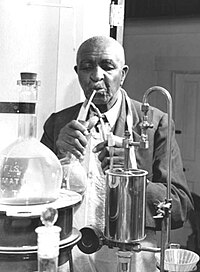
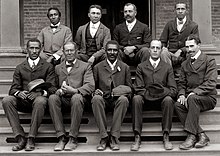
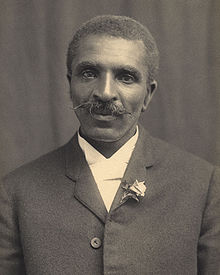
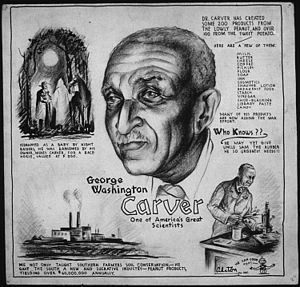
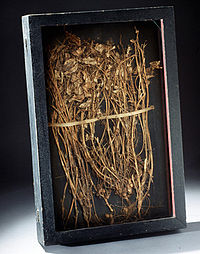
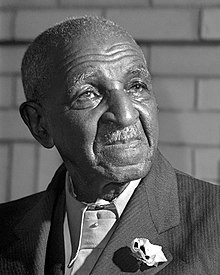

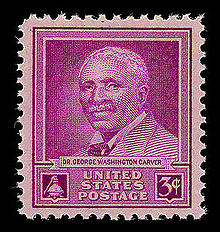
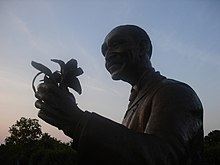
anniversary wishes for uncle and aunty
ReplyDeleteanniversary wishes for chacha and chachi